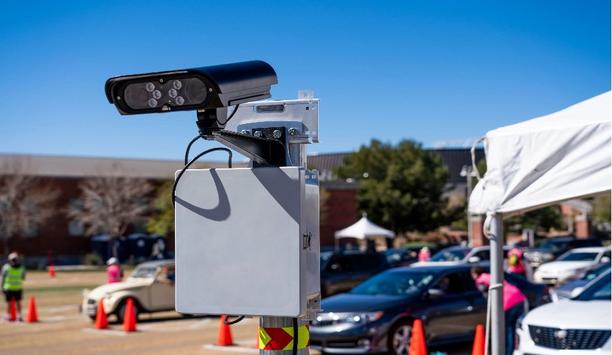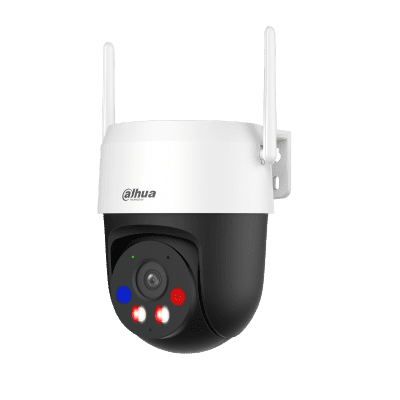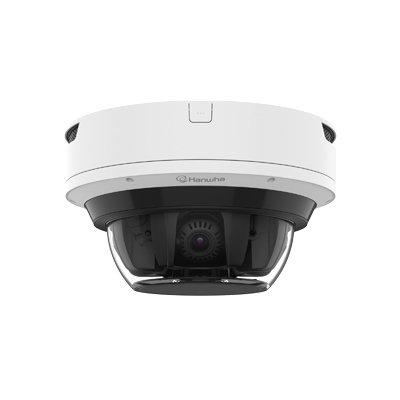Ambarella, Inc., an AI vision silicon company, Lumentum, a designer and manufacturer of innovative optical and photonic products, and ON Semiconductor®, a provider of CMOS image sensor solutions announced two new joint reference designs that accelerate AIoT device deployment across verticals, building on the companies’ previous joint solution for contactless access systems.
Intelligent 3D solutions
By combining the data from Lumentum’s high-performance VCSEL array illuminators and an ON Semiconductor image sensor using Ambarella’s AI SoC, higher levels of accuracy and more intelligent decision-making can be achieved in next-generation AIoT devices for biometric access control, 3D electronic locks, and other intelligent sensing applications.
Originally intended for biometric access control and electronic locks, these new reference designs can also address the needs of smart cities, smart buildings, smart homes, and intelligent healthcare.
Additionally, the high level of integration provided by these joint solutions significantly lowers system power consumption and thermal design requirements while enabling much smaller product form factors.
AI and IoT enabled access systems
“Ambarella’s vision is to combine AI processing with 3D and vision sensing to create an ambient intelligent future,” said Fermi Wang, President, and CEO of Ambarella.
“This collaboration with Lumentum and ON Semiconductor will further advance the convergence of AI and IoT to enable a new generation of access control systems while inspiring novel categories of ambient sensing products—all powered by the fusion of sensors using AI vision processors that interact intelligently and unobtrusively with people to address their ever-evolving needs.”
Enhancing the accuracy of AIoT devices
“Our new joint solutions will greatly increase the accuracy of AIoT devices across application verticals—starting with biometric access control and electronic locks—enabling them to recognise people and predict their needs, rather than requiring a direct human interface,” said Téa Williams, Senior Vice President and General Manager, 3D Sensing of Lumentum.
The solutions will take advantage of 3D sensing to inject a new dimension of data input for improved decision-making
“Many of these applications will take advantage of 3D sensing to inject a new dimension of data input for improved decision-making."
"As an example, using higher resolution VCSEL-based spot illumination enables longer sensing ranges and higher accuracy facial recognition. Lumentum’s industry-leading and high-performance VCSEL arrays with zero field failures, used across these joint solutions, are driving new applications and helping realize the dream of AIoT devices with 3D sensing capabilities.”
Intelligent sensing devices
“Image sensors are the eyes for intelligent sensing devices. Their ability to see farther with more detail provides significantly more information for the AI processor’s decision-making in AIoT devices,” said Gianluca Colli, Vice President and General Manager, Industrial and Consumer Sensor Division (ICSD) group at ON Semiconductor.
“Our industry-leading RGB-IR sensor technology, combined with the advanced ISP capabilities of Ambarella’s AI vision SoCs, can bring both visible and IR images into devices simultaneously. For this second generation of our joint solutions, we leveraged customer feedback to quadruple the resolution of our RGB-IR image sensors to 4K (8MP).”
Application-specific AIoT solutions
The three companies’ new joint AIoT solutions consist of two reference designs and additional 3D sensing development kits, each uniquely configured to address application-specific demands for the combination of AI processing, 3D depth sensing, and vision sensing:
- Targeted at next-generation biometric access control readers, the Vision+ reference design is the AIoT industry’s first 4K solution to perform single-camera, 940nm structured-light sensing based on RGB-IR technology. It is also the first to leverage a single-chip solution for depth processing, AI processing, and video processing. Based on the Ambarella CV22 CVflow® AI vision processor, it includes single-camera structured-light sensing powered by Lumentum’s VCSEL technology, featuring a range of 2 meters, and a 4K (8MP) RGB-IR CMOS image sensor from ON Semiconductor.
- Targeted at next-generation smart electronic door locks, or eLocks, for both commercial and residential applications, the Saturn reference design is the AIoT industry’s first to integrate AI processing for both single-camera structured-light sensing and fast-boot video processing. It is based on the Ambarella CV25 CVflow AI vision processor and includes a structured-light camera powered by Lumentum’s VCSEL technology and the AR0237CS 2MP RGB-IR image sensor from ON Semiconductor.
- Targeted at intelligent sensing applications and with opportunities across verticals, Ambarella’s CV2 series CVflow AI vision processor-based development kits can now be outfitted with ToF sensor adapters that are powered by Lumentum’s leading-edge VCSEL arrays. An optional 4K RGB-IR image sensor adapter is also available for these kits.
Easy integration of third-party applications
The open software development kit (SDK) for Ambarella’s CVflow AI vision processors allows the easy integration of third-party applications while enabling OEMs to address differing regional requirements with a single platform (for example, using different AI algorithms in different regions).
Additionally, this robust, Linux-based SDK expands the capabilities of edge sensing devices, simplifies product development, and speeds time-to-market through:
- Custom application development capabilities
- Support for different 3D modalities, including structured light and ToF. Uniquely, a single Ambarella SoC provides 3D sensing processing without the need for a dedicated depth processor or a separate host processor
- High AI inference capabilities on the camera device to enable multiple neural networks (NNs) to run simultaneously
- Robust AI tools to support deep neural network (DNN) development and migration
- Integrated ISP to handle challenging scenes, including high dynamic range (HDR) and low light scenarios
- Built-in Arm® processors to run customer applications
- Integrated security hardware, including secure boot, OTP to store encryption keys, and Arm TrustZone technology for secure encryption key comparisons
- Rich peripheral interface support to simplify system designs
Availability
These joint reference designs and development kits are expected to be available in June. Additionally, the three companies will present these new joint solutions on June 2, 2021, in a live webinar hosted by Laser Focus World magazine.





















